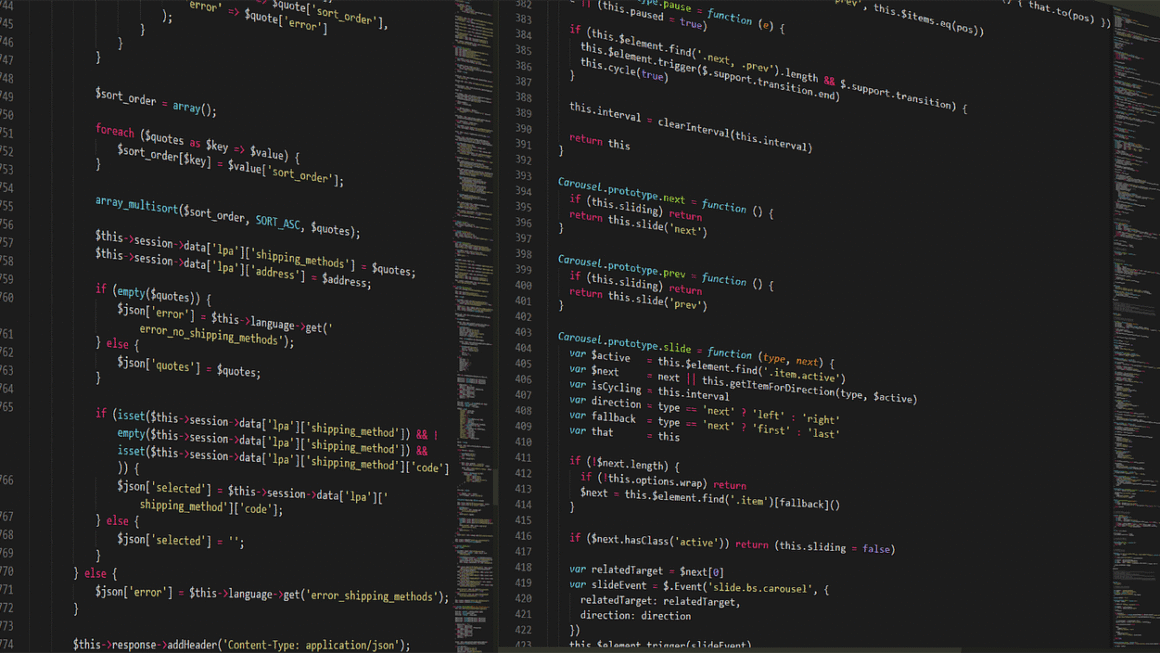Programming, the art and science of instructing computers to perform specific tasks, is a cornerstone of our modern world. From the apps we use daily to the complex systems that power global infrastructure, programming touches nearly every facet of life. Understanding programming is no longer just for software engineers; it’s a valuable skill that can empower individuals in various fields, fostering innovation, problem-solving, and a deeper understanding of technology.
What is Programming?
Defining Programming
Programming, at its core, is the process of creating a set of instructions that tell a computer what to do. These instructions, written in a specific language the computer understands, are called code. Think of it as writing a very detailed recipe for a computer to follow. A programmer translates human needs and ideas into code that a machine can execute, ultimately automating processes and creating new functionalities.
The Role of Programming Languages
- Variety is Key: Many different programming languages exist, each with its strengths and weaknesses. Some are better suited for web development (like JavaScript), while others excel in data science (like Python) or system programming (like C++).
- Syntax Matters: Each language has its own syntax, which is the set of rules that govern how code is written. Adhering to the correct syntax is crucial for the code to be correctly interpreted by the computer.
- Examples:
Python: Known for its readability, often used for beginners. A simple “Hello, World!” program in Python: `print(“Hello, World!”)`
JavaScript: Primarily used for front-end web development to add interactivity to websites.
Java: A versatile language used for enterprise applications, Android app development, and more.
C++: A powerful language often used for game development, operating systems, and high-performance applications.
From Source Code to Execution
The code written by a programmer, known as source code, needs to be translated into a format the computer can understand – machine code. This translation is typically done by a compiler or an interpreter.
- Compiler: Compiles the entire source code at once into an executable file. This file can then be run independently. Examples of compiled languages are C++ and Java (which compiles to bytecode).
- Interpreter: Executes the source code line by line. Python and JavaScript are examples of interpreted languages.
Why Learn Programming?
Career Opportunities and High Demand
The demand for skilled programmers is consistently high across various industries. According to the U.S. Bureau of Labor Statistics, employment in computer and information technology occupations is projected to grow much faster than the average for all occupations, with roughly 667,600 new jobs expected over the next decade.
- Diverse Roles: Programmers can work as software developers, web developers, data scientists, mobile app developers, cybersecurity specialists, and more.
- Competitive Salaries: Programming roles often come with competitive salaries, reflecting the value of their skills and the high demand in the market.
- Remote Work Options: Many programming jobs offer remote work opportunities, providing flexibility and work-life balance.
Enhancing Problem-Solving Skills
Programming is fundamentally about solving problems. It requires breaking down complex issues into smaller, manageable steps and devising logical solutions.
- Logical Thinking: Learning to code enhances logical thinking and analytical skills, which are valuable in various aspects of life.
- Algorithmic Thinking: Programming involves designing algorithms, which are step-by-step procedures for solving a problem.
- Debugging Skills: Programmers frequently encounter errors in their code (bugs). Debugging, the process of finding and fixing these errors, is a crucial skill that fosters patience and attention to detail.
Fostering Creativity and Innovation
Programming is not just about writing code; it’s about creating something new. It provides a powerful medium for expressing creativity and bringing ideas to life.
- Building Apps and Websites: You can create your own apps, websites, and software tools to solve your own problems or address the needs of others.
- Automating Tasks: Programming allows you to automate repetitive tasks, freeing up time for more creative and strategic work.
- Experimenting with New Technologies: The field of programming is constantly evolving, with new technologies and tools emerging regularly, providing opportunities for experimentation and innovation.
Getting Started with Programming
Choosing Your First Programming Language
Selecting the right language to start with depends on your goals and interests.
- Python: A great choice for beginners due to its easy-to-read syntax and versatility.
- JavaScript: Essential for front-end web development and increasingly used for back-end development as well.
- HTML/CSS: While not strictly programming languages, they are foundational for web development. HTML structures the content of a webpage, and CSS styles its appearance.
Utilizing Online Resources and Courses
A wealth of online resources and courses are available to help you learn programming, ranging from free tutorials to paid courses with personalized support.
- Codecademy: Offers interactive coding courses in various languages.
- Coursera and edX: Provide university-level programming courses and specializations.
- FreeCodeCamp: Offers a free curriculum focused on web development, with projects to build a portfolio.
- YouTube: Numerous free programming tutorials available from experienced developers.
Practicing and Building Projects
The best way to learn programming is by doing. Practice regularly and work on small projects to solidify your understanding of the concepts.
- Start Small: Begin with simple projects like building a basic calculator or a to-do list app.
- Set Goals: Define specific goals for each project to stay motivated and track your progress.
- Seek Feedback: Share your code with other programmers and ask for feedback to improve your skills. Platforms like GitHub are great for collaboration.
- Don’t Be Afraid to Experiment: Try different approaches and learn from your mistakes.
Advanced Programming Concepts
Object-Oriented Programming (OOP)
OOP is a programming paradigm that organizes code around “objects,” which are instances of classes.
- Key Concepts:
Encapsulation: Bundling data and methods that operate on that data within a class.
Inheritance: Allows a class to inherit properties and methods from another class.
* Polymorphism: Enables objects of different classes to respond to the same method call in their own way.
- Benefits: OOP promotes code reusability, modularity, and maintainability.
Data Structures and Algorithms
Understanding data structures and algorithms is crucial for writing efficient and scalable code.
- Data Structures: Ways of organizing and storing data, such as arrays, linked lists, trees, and graphs.
- Algorithms: Step-by-step procedures for solving a problem or performing a task.
- Importance: Choosing the right data structure and algorithm can significantly impact the performance of your program.
Version Control Systems (e.g., Git)
Version control systems are essential tools for managing changes to code and collaborating with other developers.
- Git: A widely used version control system that tracks changes to files and allows you to revert to previous versions.
- GitHub and GitLab: Web-based platforms that provide hosting for Git repositories, as well as collaboration tools for software development.
- Benefits: Version control systems enable you to track changes, collaborate effectively, and prevent code loss.
Conclusion
Programming is a powerful and rewarding skill that can open up a world of opportunities. By understanding the fundamentals, choosing the right language, practicing regularly, and embracing continuous learning, anyone can embark on a successful programming journey. The key is persistence, curiosity, and a willingness to embrace challenges. As technology continues to evolve, programming will undoubtedly remain a crucial skill for shaping the future. So, start coding today and unlock your potential to create, innovate, and solve real-world problems!




